Online negative content refers to digital material that spreads harm, hostility, or misinformation, including abusive language, false claims, defamation, or offensive imagery, which can damage reputations, incite conflict, or mislead audiences.
A double-edged sword, Google search results are available and visible to anyone with an internet connection and the ability to conduct a Google web search. This information is useful to people who want to know another person’s conduct before engaging with them. On one hand, positive online content can improve an individual’s prospects in building meaningful relationships, while negative content can have the opposite effect. Around 67 % of recruiters now use social media to vet or source candidates. 93 % of consumers say online reviews influence their purchase decisions. Given these realities, removing unwanted Google links has become essential.

Your online reputation can also have damaging effects on your personal relationships. Most people check a romantic partner online before committing to a relationship. Therefore, knowing the right and effective ways to remove negative content from Google search is a priority.
What Are Some Examples of Negative Content?
Negative content includes misleading information, defamation, harassment, hate speech, disturbing visuals, trolling, and leaks of private data that cause harm online.
False or Misleading Information
Articles, posts, or news stories that present factual errors, distortions, or fabricated claims. These often mislead readers and can harm an individual’s or a company’s credibility.
Defamatory Statements
Written or spoken remarks that are false and damaging. Libel and slander fall into this category and can quickly spread online, leaving long-lasting effects.
Cyberbullying
Harassment, threats, and public shaming are carried out through social platforms, comment sections, or forums. This behavior often targets individuals and can escalate into serious emotional harm.
Hate Speech and Extremism
Language or material that promotes hostility, violence, or discrimination against groups or individuals. This content can fuel division and spread harmful ideologies.
Graphic or Disturbing Material
Images and videos that shock or traumatize. They may depict violence, accidents, or other distressing scenes that cause emotional strain.
Customer Complaints and Trolling
Negative reviews or inflammatory comments designed to provoke conflict. While some feedback is genuine, trolling seeks only to attack or embarrass.
Leaked Personal Information
Unlawful or unauthorized publication of private data such as addresses, phone numbers, financial details, or intimate photos. Such leaks put privacy and safety at risk.
What Is the Impact of Negative Content?
The spread of negative content damages mental health, reputation, opportunities, and finances while algorithms often amplify its reach.
Mental Health
Constant exposure to hostile or disturbing material can trigger stress, anxiety, or depression. Victims of online abuse often experience lasting psychological harm.
Reputation Damage
Businesses and individuals can suffer severe loss of trust and credibility when false or hostile content appears prominently in search results. Even a single damaging link can overshadow positive achievements.
Loss of Opportunities
Employers, clients, and partners often search online before making decisions. Negative content can close doors to jobs, contracts, or collaborations.
Amplification Through Algorithms
Social media platforms tend to push sensational or divisive content because it attracts engagement. This cycle increases visibility for harmful material and makes it harder to control.
Financial Consequences
Bad press, harsh reviews, or damaging claims can reduce sales, deter investors, or drive customers to competitors.
4 Ways to Remove Negative Content From Google
The above-mentioned facts and statistics clearly demonstrate the repercussions of negative content appearing in search engines. In other words, you cannot have full control over what people say about you online, but you can learn strategies to address such issues. Therefore, we will explore four ways to remove a link from Google.

1. Contact the Website Owner
The first step is always the simplest—go straight to the source. If the website owner agrees, the link can be taken down quickly and disappear from Google soon after.
Direct Contact
Reach out to the owner of the website hosting the negative content and ask them to remove it. This is the fastest solution if they agree.
Identify Content Violations
If the content is defamatory, violates privacy, or breaches the site’s own terms of service, explain this clearly and request immediate removal.
2. Submit a Google Removal Request
If the website owner does not remove the content, your next option is to ask Google directly. Google will not delete everything, but it can remove links that meet certain rules.
Request Outdated Content Removal
If the negative page is no longer live but still appears in search results, use Google’s Outdated Content Tool to refresh indexing.
Submit a Legal Request
If the content includes personal data, illegal material, or violates Google’s policies, you can file a removal request through Google Legal Help.
3. Suppress the Negative Link
Not every unwanted link can be removed. In those cases, the best approach is to make sure more positive and trustworthy pages show up above it in Google. By adding and improving good content, you can push negative results further down where fewer people will see them.
Step 1: Look at the Search Results
Type your name or business into Google and note which results are positive, neutral, or negative. This helps you know which ones to improve or replace.
Step 2: Improve What You Already Own
If your website or blog appears on the second page, make it better with clear titles, updated content, and useful information. The stronger your own pages are, the higher they can move.
Step 3: Strengthen Your Social Profiles
Make sure your LinkedIn, YouTube, or other social accounts are complete and active. These sites often appear high in search results and can push negative links lower.
Step 4: Create New Websites
If you do not already have one, build a new website using your name or business in the address. This gives search engines more positive pages that can appear before any negative ones. As you set up the site, conduct an SEO audit to identify strengths and weaknesses. The audit will guide you on how to improve ranking and gain better visibility in search results.
Step 5: Share Your Voice Elsewhere
Write guest articles, answer questions, or contribute to trusted websites in your field. Positive mentions on well-known sites can outrank harmful links.
Step 6: Connect Your Pages
Link your different websites, blogs, or profiles together. When your own pages support each other, they often show up higher in Google.
Step 7: Win the “Top Box”
Google sometimes shows a short answer at the very top of the page called “featured snippet”. If you write content that gives a clear, direct answer to common questions, you have a chance to appear there.
Step 8: Cover Related Searches
People may search your name along with words like “reviews” or “complaints.” Encourage positive content that appears for these searches.
Step 9: Keep an Eye on Changes
Search results move around. Check often to see if your positive pages are moving up and if the negative ones are falling.
Step 10: Push Bad Links to Page Two
Most people never click past the first page of Google. Even moving a negative result to page two makes a big difference in how often it is seen.
4. Take Legal Action
If all other options fail, the law may be your last resort. Legal action can be time-consuming and costly, but in some cases it is the only way to remove damaging content from Google.
File a DMCA Takedown Notice
If a negative link republishes your original work without permission, you can ask Google to remove it through a DMCA takedown request. This applies only to copyrighted material such as text, photos, or videos—not opinions or reviews.
Submit your request on Google’s Legal Removal page, identifying the work you own and the infringing URLs. Include proof of ownership, a sworn statement that the use is unauthorized, and your signature. If approved, Google will delist the content from search results, though it will remain on the original site.
Obtain a Court Order
For defamatory or unlawful content, you may need to pursue a court order. Once obtained, submit it to Google’s legal team to ensure the link is removed from search results.
How to Protect Your Online Reputation?
Removing one negative link from Google does not guarantee future protection. Even after a clean-up, new harmful content may emerge, so constant vigilance is key. In online reputation management, prevention is often more effective than repair.
Build a Reputation Strategy
Develop a long-term plan to strengthen your online presence. Publish credible, high-quality content and review your search rankings regularly.
Practice Digital Safety
Use strong passwords, enable two-factor authentication, and keep software up to date. When sharing sensitive files, use secure platforms and encryption.
Be Mindful of What You Share
Think carefully before posting personal or business data online. Be alert to phishing attempts or platforms trying to collect your private information.
Respond with Calm and Strategy
Encounter negative content? Avoid impulsive reactions. Stay calm, assess the situation, and follow proven strategies for removal or suppression.
Why This Matters?
Statistics show the impact of online reputation and digital risks is real. Nearly 93 percent of consumers read reviews before making a purchase, and 94 percent say that a single negative review can deter them from a business. At the same time, phishing emails account for approximately 1.2 percent of all global email traffic, totaling 3.4 billion daily, while phishing is responsible for 17 percent of all data breaches. The cost of these breaches is steep, with the global average reaching $4.44 million USD in 2025.
The chart below illustrates these key findings, underscoring why protecting your reputation and digital safety is essential.
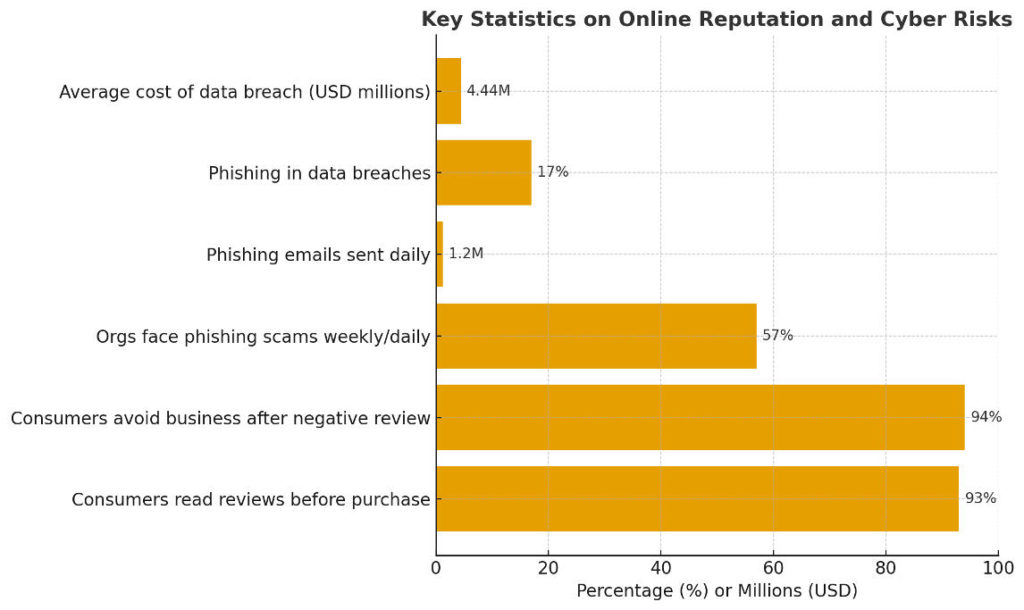
Image Credits: Blue Ocean Global Technology
Key Takeaways
Your online reputation is one of your most valuable assets. Negative content on Google can harm credibility, limit opportunities, and cause emotional and financial stress. While you cannot control everything published online, you can act. Start by contacting website owners, then use Google’s removal tools when possible. If the issue persists, strengthen your digital presence with positive, authoritative content that pushes harmful links lower. In cases of copyright infringement or defamation, legal remedies such as DMCA notices or court orders may be necessary. Finally, protecting your reputation is an ongoing process. Practice digital safety, monitor search results, and build a proactive strategy. By combining vigilance with consistent, credible content, you reduce the power of negative links and secure a stronger, more trustworthy online presence.
FAQs
Can I remove any link from Google search results?
No. You cannot delete links yourself. Only website owners can remove the content. However, if the link contains personal or harmful information, you can report it to Google for review.
How do I remove outdated content from Google search?
If a page is gone but still appears in search, you can use Google’s Outdated Content Tool to request its removal. It may take a few days to process.
What is the process to remove personal information from Google?
You can submit a request through Google’s removal tool. Provide the link, describe the content, and explain why it violates Google’s policies. Google will review and decide whether to take it down.
Can I delete links from Google without contacting the website owner?
No. Google does not control what is published on other sites. You can ask site owners to remove links, or report harmful content to Google if it breaks their rules.
How long does it take for Google to remove a link?
It varies. Temporary removals can happen within a few days. Permanent removals depend on the site owner and may take longer.
Removing Negative Content Online Is One of the Simplest Ways to Restore Your Online Reputation.
Get in Touch With Us Today to Start Repairing Your Reputation!



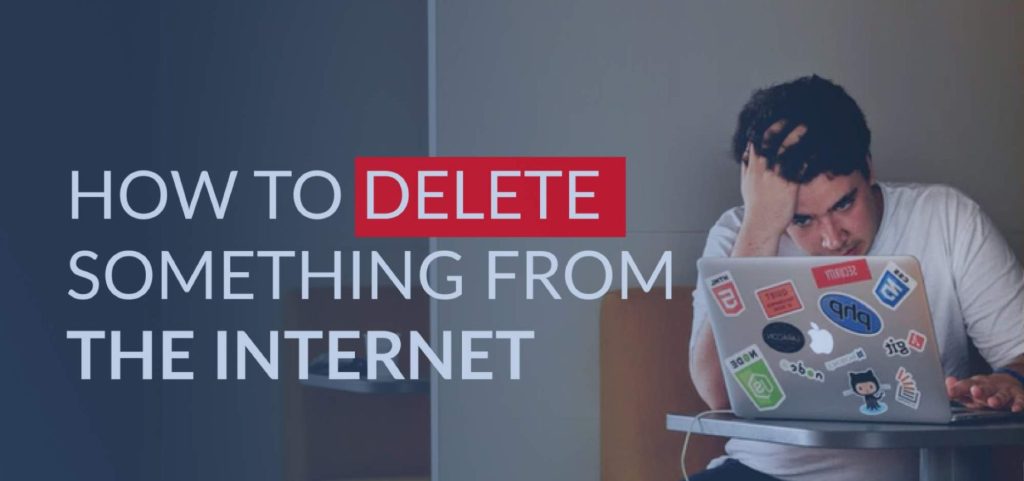
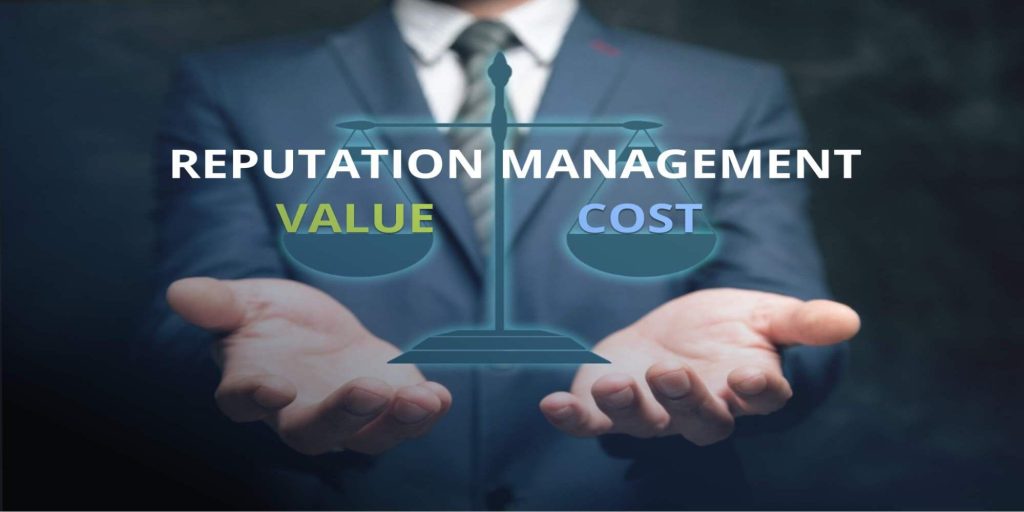



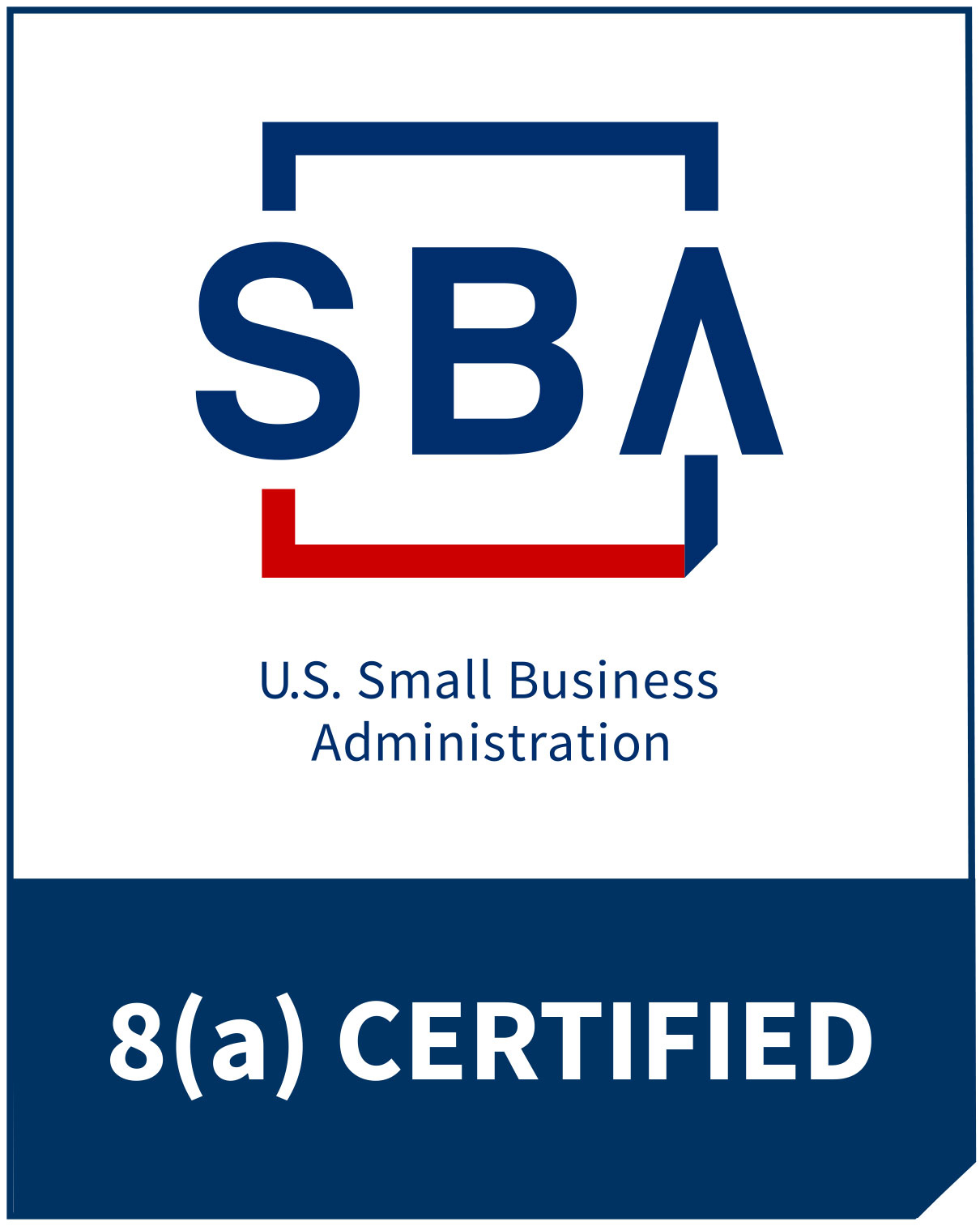

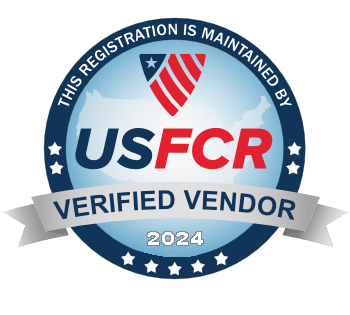


Comments are closed.